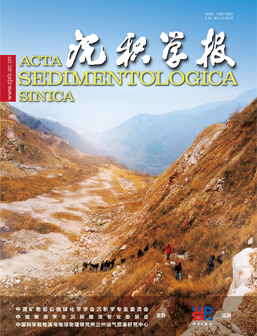Characteristics of Chromogenic Minerals in Cretaceous Red Mudstones and the Palaeoenvironmental Effect in the North Yellow Sea Basin, Eastern China
doi: 10.14027/j.issn.1000-0550.2024.001
- Received Date: 2023-10-09
- Available Online: 2024-02-29
-
Key words:
- Red mudstone /
- Chromogenic minerals /
- Paleoenvironment /
- Cretaceous /
- North Yellow Sea Basin
Abstract: During the Cretaceous period, extreme greenhouse climate, global oceanic anoxia and oxygen enrichment events occurred in geological history, and the Cretaceous red beds that appeared during this period contain important information related to paleoclimate and paleoenvironment, which is of great significance to the understanding of stratigraphic surface systems. In this paper, a set of red mudstones developed during the Cretaceous in the North Yellow Sea Basin of eastern China is taken as the object of study. X-ray diffraction and diffuse reflectance spectroscopy (XRD) analyses were carried out on the red and grey mudstones of the Middle Jurassic to Lower Cretaceous, in order to semi-quantitatively and quantitatively analyze the composition and content of chromogenic minerals in the rocks. We also combined the ordinary thin section and scanning electron microscope methods to observe the characteristics of chromogenic minerals in the red mudstone, such as the morphology, distribution and crystalline size of iron-containing minerals. XRD results show that the chromogenic minerals in the red mudstone are hematite and goethite, of which hematite is the main content, the highest content can reach 14%, while the grey mudstone does not contain hematite; hematite aggregates can be seen under the microscope in the red mudstone, and alteration phenomena can be seen in the local area; hematite can be seen in the form of granular or plate aggregates under the scanning electron microscope; Using the characteristics of changes in hematite and goethite content, it is concluded that the climate was relatively humid from the Late Jurassic to the Early Cretaceous, and hot and dry from the Middle to Late Early Cretaceous. Combined with the paleoclimate data of the North Yellow Sea Basin and its adjacent areas, the method of using iron oxides to reflect the paleoclimate changes in the study area is found to be feasible, and a comprehensive analysis suggests that the chromogenic minerals in the red mudstone of the Lower Cretaceous have indicative significance for the paleoenvironment and paleoclimate.
| Citation: | Characteristics of Chromogenic Minerals in Cretaceous Red Mudstones and the Palaeoenvironmental Effect in the North Yellow Sea Basin, Eastern China[J]. Acta Sedimentologica Sinica. doi: 10.14027/j.issn.1000-0550.2024.001 |






 DownLoad:
DownLoad: